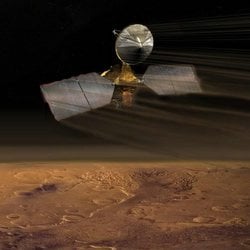Twin Lakes on Titan
Opportunity Peeks into Victoria Crater
Podcast: Hot Jupiters and Pulsar Planets
Delta II Launches GPS Satellite
Warmest World in 12,000 Years
Mars Rovers Hired on for Another Year
New Kind of Supernova Discovered
Battlestar Galactic Season 2.5 DVD Giveaway
Expedition 14 Reaches the Station
New Ring Discovered at Saturn
Opportunity Sees the Rim of Victoria Crater
Astrophoto: NGC 7048 by Stefan Heutz
New Image of the Face on Mars
Atlantis Back on Earth, Safe and Sound
Aerobraking Mars Orbiter Surprised Scientists

 Universe Today
Universe Today